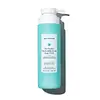What's inside
What's inside
 Key Ingredients
Key Ingredients

 Benefits
Benefits

 Concerns
Concerns

 Ingredients Side-by-side
Ingredients Side-by-side

Water
Skin ConditioningDecyl Glucoside
CleansingGlycerin
HumectantDisodium Cocoamphodiacetate
CleansingCocamidopropyl Hydroxysultaine
CleansingAcrylates/C10-30 Alkyl Acrylate Crosspolymer
Emulsion StabilisingCocamidopropyl Dimethylamine
EmulsifyingSalicylic Acid
MaskingHelianthus Annuus Seed Oil
EmollientCarthamus Tinctorius Seed Oil
MaskingOlea Europaea Fruit Oil
MaskingPhenoxyethanol
PreservativeSodium Hydroxide
BufferingEthylhexylglycerin
Skin ConditioningTetrasodium Glutamate Diacetate
Polysorbate 80
EmulsifyingWater, Decyl Glucoside, Glycerin, Disodium Cocoamphodiacetate, Cocamidopropyl Hydroxysultaine, Acrylates/C10-30 Alkyl Acrylate Crosspolymer, Cocamidopropyl Dimethylamine, Salicylic Acid, Helianthus Annuus Seed Oil, Carthamus Tinctorius Seed Oil, Olea Europaea Fruit Oil, Phenoxyethanol, Sodium Hydroxide, Ethylhexylglycerin, Tetrasodium Glutamate Diacetate, Polysorbate 80
Water
Skin ConditioningCocamidopropyl Hydroxysultaine
CleansingSodium Cocoyl Isethionate
CleansingSodium Cocoyl Taurate
CleansingNiacinamide
SmoothingGlycerin
HumectantSodium Chloride
MaskingGlycol Distearate
EmollientCoconut Acid
CleansingSodium Isethionate
CleansingPCA Glyceryl Oleate
EmollientTetrasodium Glutamate Diacetate
Xylitol
HumectantEthylhexylglycerin
Skin ConditioningSodium Phosphate
BufferingSodium Hydroxide
BufferingPhenoxyethanol
PreservativeWater, Cocamidopropyl Hydroxysultaine, Sodium Cocoyl Isethionate, Sodium Cocoyl Taurate, Niacinamide, Glycerin, Sodium Chloride, Glycol Distearate, Coconut Acid, Sodium Isethionate, PCA Glyceryl Oleate, Tetrasodium Glutamate Diacetate, Xylitol, Ethylhexylglycerin, Sodium Phosphate, Sodium Hydroxide, Phenoxyethanol
 Reviews
Reviews

Ingredients Explained
These ingredients are found in both products.
Ingredients higher up in an ingredient list are typically present in a larger amount.
Cocamidopropyl Hydroxysultaine is a synthetic cleansing agent, though it is derived from coconut oil.
It is used to enhance the texture of products by boosting lather and thickening the texture. As a cleanser, Cocamidopropyl Hydroxysultaine is mild.
Ethylhexylglycerin (we can't pronounce this either) is commonly used as a preservative and skin softener. It is derived from glyceryl.
You might see Ethylhexylglycerin often paired with other preservatives such as phenoxyethanol. Ethylhexylglycerin has been found to increase the effectiveness of these other preservatives.
Glycerin is already naturally found in your skin. It helps moisturize and protect your skin.
A study from 2016 found glycerin to be more effective as a humectant than AHAs and hyaluronic acid.
As a humectant, it helps the skin stay hydrated by pulling moisture to your skin. The low molecular weight of glycerin allows it to pull moisture into the deeper layers of your skin.
Hydrated skin improves your skin barrier; Your skin barrier helps protect against irritants and bacteria.
Glycerin has also been found to have antimicrobial and antiviral properties. Due to these properties, glycerin is often used in wound and burn treatments.
In cosmetics, glycerin is usually derived from plants such as soybean or palm. However, it can also be sourced from animals, such as tallow or animal fat.
This ingredient is organic, colorless, odorless, and non-toxic.
Glycerin is the name for this ingredient in American English. British English uses Glycerol/Glycerine.
Learn more about GlycerinPhenoxyethanol is a preservative that has germicide, antimicrobial, and aromatic properties. Studies show that phenoxyethanol can prevent microbial growth. By itself, it has a scent that is similar to that of a rose.
It's often used in formulations along with Caprylyl Glycol to preserve the shelf life of products.
Sodium Hydroxide is also known as lye or caustic soda. It is used to adjust the pH of products; many ingredients require a specific pH to be effective.
In small amounts, sodium hydroxide is considered safe to use. However, large amounts may cause chemical burns due to its high alkaline.
Your skin has a natural pH and acid mantle. This acid mantle helps prevent harmful bacteria from breaking through. The acid mantle also helps keep your skin hydrated.
"Alkaline" refers to a high pH level. A low pH level would be considered acidic.
Learn more about Sodium HydroxideTetrasodium Glutamate Diacetate is a chelating agent. Chelating agents help prevent metal ions from binding to other ingredients. This helps prevent unwanted effects and reactions from a product. These metal ions may come from water and are found in miniscule amounts.
Tetrasodium Glutamate Diacetate can also help other preservatives be more effective.
Water. It's the most common cosmetic ingredient of all. You'll usually see it at the top of ingredient lists, meaning that it makes up the largest part of the product.
So why is it so popular? Water most often acts as a solvent - this means that it helps dissolve other ingredients into the formulation.
You'll also recognize water as that liquid we all need to stay alive. If you see this, drink a glass of water. Stay hydrated!
Learn more about Water